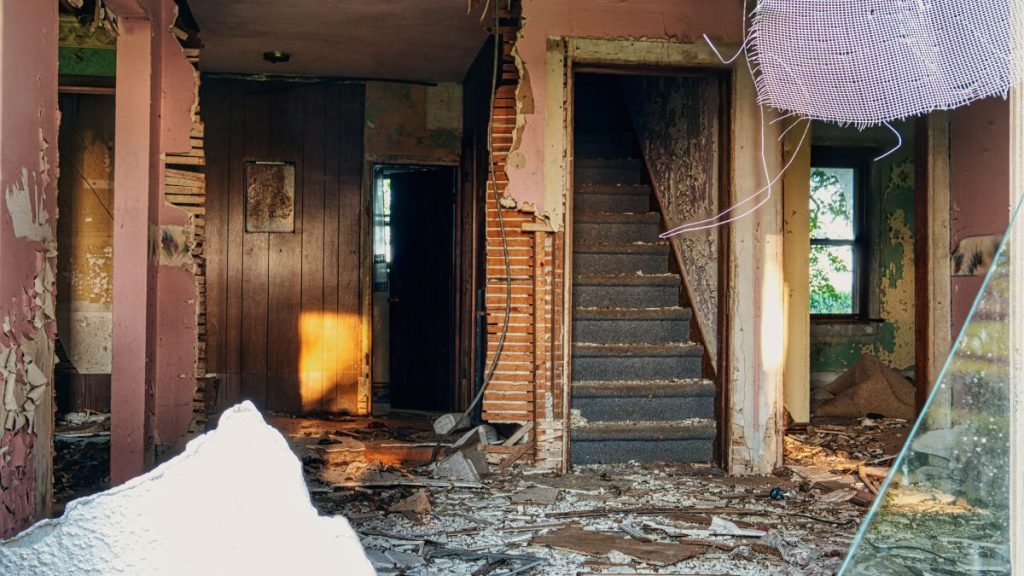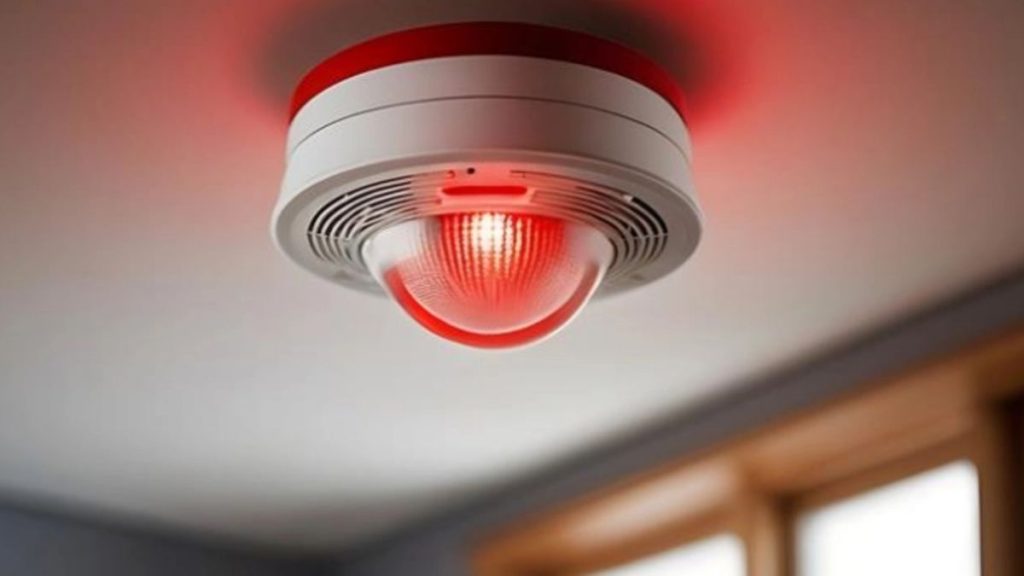Two Firefighters Hurt in Iowa Blaze Caused by Lithium Battery Explosion
I still remember reading about this fire and feeling a chill. Just before 6:45 p.m. on Saturday, November 1, firefighters across Plymouth County, Iowa, were called to a house at 3311 Sedona Hills South in southwest Le Mars. When they arrived, the back of the home was engulfed in thick smoke and heavy flames, creeping up toward the roofline and a covered deck.
I can only imagine what it must have been like for the first responders. They initially attacked the fire from the outside because it was too dangerous to go in. Later, they tried entering from the front, but part of the floor flashed over, forcing them back. Only after bringing down flames through the windows were they able to make a second, safer entry and finally get the fire under control.
Two firefighters were hurt during the response—one partially fell through a collapsed floor, and the other suffered back pain. Thankfully, both were treated on scene and didn’t need to go to the hospital. No one was home at the time, and even the two pets inside managed to escape.
By the time the fire was extinguished, the damage was staggering. The entire main floor and most of the home’s contents were destroyed, with losses estimated around $475,000. The house was red-tagged as unlivable, leaving a clear reminder of how quickly a fire can change lives and property.
The Extent of Damage and Loss

When I read about the scale of this fire, it really hit me how quickly a home can be destroyed. According to Sioux Falls Live, the house at 3311 Sedona Hills South was completely red-tagged as unlivable. The main floor and nearly all the contents were considered a total loss, with damages estimated at $475,000.
Even though no one was home, two pets managed to escape, which is a small relief amid the devastation. Fire crews spent roughly three and a half hours battling the blaze, and during that time, they also responded to three additional ambulance calls in the city. It really makes you appreciate the risks firefighters take and the sheer speed at which fire can devastate property.
The financial loss is obvious, but the emotional toll on homeowners losing their home and possessions is equally staggering. Reading this, I can’t help but think about how vulnerable any of us can be, especially with something as common as a battery charging at home.
Fires like the one in Le Mars can be devastating, much like the Massachusetts home fire that tragically claimed one person and two pets, reminding us how quickly things can go wrong.
Investigating the Cause – Lithium Battery Explosion
The investigation revealed something that made me sit up straight: the fire was most likely triggered by a lithium battery explosion inside the master bedroom. This wasn’t just speculation—the official Facebook page of Le Mars Fire Rescue confirmed it, reminding everyone to charge batteries on hard, non-combustible surfaces.
What struck me is how common these devices are in our homes—bikes, scooters, phones, even massage machines—and how often we take charging safety for granted. One wrong placement or overcharging incident can spiral into a disaster. This wasn’t a freak accident; it’s part of a growing nationwide pattern of lithium battery-related fires.
The takeaway is clear: I now always check the surface I charge batteries on and never leave them unattended while charging. It’s a small habit, but it could save a house—and lives.
Lithium Batteries as Household Fire Hazards
You might be thinking, “I’ve never had a battery explode at home.” I get it—but the numbers are climbing. Lithium-ion batteries are incredibly energy-dense, and if they overheat, short-circuit, or get damaged, they can catch fire or explode in seconds.
Devices like e-bikes, power banks, smartphones, and even home energy storage units can become ticking time bombs if mishandled. Fire departments nationwide are reporting more fires caused by these batteries than ever before. The problem is simple: most of us don’t treat charging or storing batteries like handling a potential hazard.
By following a few practical rules—charge on a hard, non-flammable surface, avoid overcharging, and never leave devices unattended—you can drastically reduce your risk. I make it a point to apply these rules at home and encourage friends to do the same.
Firefighting Challenges and Lessons Learned
I often think about the firefighters’ perspective. In this incident, they had to switch tactics multiple times—starting with a defensive approach from the back, then risking interior entry, only to retreat when part of the floor flashed over.
The danger was real, and the physical and mental demands must have been intense.
It’s a reminder that house fires are unpredictable and even seasoned firefighters face life-threatening situations.
Their experience highlights the importance of proper training, safety gear, and teamwork. Reading this, I felt a deep respect for their courage and quick thinking under pressure.
These situations echo other tragic events, such as the Waukesha house fire, where firefighters faced extreme hazards while trying to save lives, highlighting the unpredictable dangers of home fires.
Safety Tips for Homeowners

Here’s where this story gets personal for all of us. After seeing what happened in Le Mars, I’ve adopted a few simple rules I want to share:
- Charge all lithium batteries on a hard, non-combustible surface.
- Never leave batteries charging unattended overnight.
- Keep smoke detectors up-to-date and test them regularly.
- Have a fire extinguisher handy, especially in areas where devices charge.
- Check your home insurance policy to ensure coverage for battery-related fires.
These aren’t just tips—they’re life-saving habits. A small precaution today can prevent losing your home tomorrow.
You can also stay updated with ongoing safety tips and fire alerts on WhatsApp, where real-time advice reaches you instantly.
Community and Emergency Response Insights
Reading about how the Le Mars Fire Rescue handled this fire gave me a new appreciation for community emergency response. They were on scene for about three and a half hours, not only extinguishing the blaze but also managing three other ambulance calls during that time. It’s a reminder of how much firefighters juggle behind the scenes, often under extreme pressure.
Their official statements on Facebook emphasized the growing nationwide risk of lithium battery fires in everyday devices like e-bikes, scooters, and phones. Sharing these warnings with the community isn’t just protocol—it’s lifesaving advice. For those of us living in Iowa—or anywhere in the U.S.—this incident is a stark wake-up call. We can’t afford to be complacent.
Seeing neighbors, fire crews, and even local media respond so quickly highlights the power of awareness and preparedness. It’s not just about your home—it’s about protecting your family and your community.
The emotional and financial toll of losing a home can be overwhelming, as seen in the Glastonbury house fire, where an entire family was left displaced and struggling to rebuild.
Takeaways and Awareness for Readers
If there’s one thing I’ve learned from the Le Mars fire, it’s that danger can be hiding in the most ordinary places—like a battery charging in your bedroom. Fires like this aren’t just headlines; they’re lessons for all of us.
Here’s what I recommend you do today: check where your batteries charge, ensure smoke detectors work, have fire extinguishers ready, and make sure your insurance covers these risks. Talk to your family about what to do in case of a fire.
I also want to hear from you: have you ever thought about the hidden fire risks in your home? What steps are you taking to stay safe? Share your thoughts below—I’d love to learn from your experience too.
For more real-life home safety stories and expert tips, check out our Home Incidents category for guidance and resources.
Disclaimer: The information in this article is based on official reports and news sources available at the time of writing. It is intended for educational and safety awareness purposes only. Readers should exercise caution and follow professional advice for fire safety and emergency situations.


